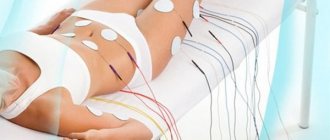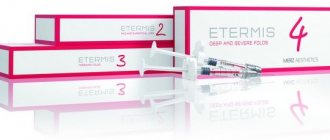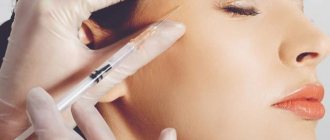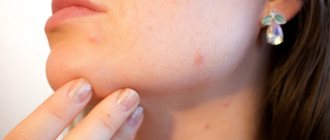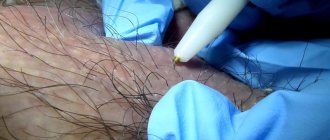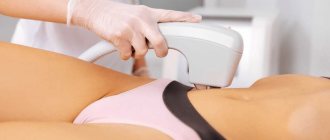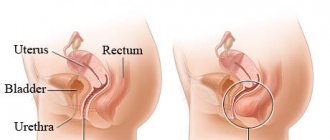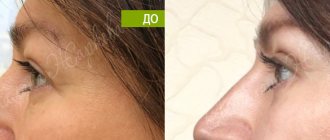Experts have developed a huge number of weight loss methods. Some of them can be classified as standard, the most effective, and beneficial for health - proper nutrition, physical activity, psychotherapy of eating habits. Others are radical, offering clients instant weight loss without any effort. One of these methods is cavitation for weight loss.
What is cavitation for the body? What is this procedure? Let's look at it in more detail in this article.
Cavitation - what is it?
Cavitation is a set of procedures aimed at getting rid of fat without surgical intervention. The method does not leave scars, hematomas, or traces of exposure on the body, which distinguishes this approach from liposuction.
Cavitation has been used in cosmetology for several years. The operating principle is based on ultrasonic influence at a wave frequency of 30-40 kHz. This leads to the occurrence of oscillatory movements, which contribute to the formation of cavitation bubbles (from the Latin cavitas - emptiness), pushing fat cells out of the tissues. Decay products are removed from the body through the lymphatic system.
The fat cell has a durable shell that is quite difficult to destroy. Therefore, most cosmetic procedures, such as massage and body wraps, provide only a temporary effect, affecting the surface layers of fat deposits. The creators of cavitation assure patients that a device using ultrasound can cope with this problem. Is it really? We'll figure out.
Efficiency
A visible result can be obtained after the first session, because approximately 15 cm3 of fat is removed at a time (minus 3-5 cm in waist circumference). In just a few sessions, the waist will decrease by 7-10 cm, and the “orange peel” will disappear.
When losing weight with the help of diets, fat cells simply decrease in size, so all the lost kilograms quickly return when you switch to your usual diet. Ultrasonic exposure allows you to completely destroy these structures without the possibility of their restoration. The most noticeable and stunning results can be expected if the amount of excess weight is not critical (around 10-20 kg).
The first changes appear within a few days after the initial session. The skin becomes more toned and elastic, and stimulation of blood circulation in the treatment area promotes regenerative processes. As a result:
- manifestations of cellulite disappear;
- the fat layer decreases;
- the elasticity of the skin returns;
- Small scars and stretch marks disappear.
✘ ✘ ✘ Side effects
In rare cases, ultrasonic cavitation can cause side effects:
- burns (if the percentage of adipose tissue is very small);
- in the presence of immune diseases, there is a risk of the onset of inflammatory processes and tissue dehydration;
It is recommended to conduct a general examination in advance in order to promptly identify individual intolerances, diseases from the list of contraindications and the risks of exacerbation of chronic conditions.
✪ Compatibility with other procedures
Ultrasound cavitation is ideally combined with sessions of lymphatic drainage and vacuum roller massage, mesotherapy, lifting, ozone therapy, pressure therapy and electrolipolysis. Stimulating the lymphatic system will help quickly remove dangerous waste products from the body so that they do not settle in other tissues and organs.
Application of ultrasonic cavitation in the medical field
Ultrasound is actively used in medicine:
- for the treatment of cholelithiasis, removal of kidney stones;
- to get rid of abscesses, gumboils;
- for disinfection of solutions;
- for the production of inhalation solutions;
- Ultrasonic waves are used in physiotherapy machines.
Recently, ultrasonic waves have been used to treat cellulite and local weight loss in problem areas. Under the action of the device, the membrane of fat cells ruptures - the contents are released and removed from the intercellular space through the lymphatic system.
Cavitation using a low-frequency ultrasonic device is almost painless, but a local increase in temperature is observed in the affected area. Equipment, as a rule, has different impact programs: for men and women.
How is the cavitation effect formed?
Ultrasonic cavitation of the abdomen and other problem areas is performed by exposing fat cells to ultrasonic irradiation. With this effect, cavitation bubbles filled with air begin to form, increase in size, and burst. The rupture is accompanied by a release of energy that can destroy the durable membrane of the fat cell and displace fats (triglycerides) into the intercellular space. The lymphatic system is responsible for removing residues. But 10% is converted into glucose and enters the blood, which can lead to complications and side effects.
After cavitation, a decrease in volume is observed, on average by 2-3 cm. This effect is really good for one procedure. But you should understand that maintaining the result will not be easy: you will need to make a lot of effort, put your diet in order, introduce physical activity and special cosmetic skin care into your daily routine. This is why doctors are skeptical about this procedure. It has been proven that, as a rule, a standard weight loss method based on proper nutrition and psychotherapy will be sufficient. In addition, it will have a greater impact and bring better results.
Hydrodynamic cavitation
The action of hydrodynamic cavitation is based on a decrease in pressure in liquids, due to which the speed of its movement and flow intensity increase. This type of procedure is rarely used in medicine and cosmetology. It has certain side effects, which include: pain in the joints, connective tissues, dizziness, difficulty breathing, exacerbation of chronic diseases, dehydration, burns, nausea. These negative consequences are quite rare, but nevertheless they occur. Therefore, the decision to undergo the procedure must be made by the doctor.
Acoustic cavitation
As a rule, acoustic cavitation is used in cosmetology and medicine. Here, using a special apparatus, a high-intensity ultrasound wave is produced. It penetrates through the skin to the cells of adipose tissue, where it forms cavitation bubbles. After the bubbles split, a liquid is released - an aspirate, which is removed through punctures made with a special instrument - a titanium cannula (a thin tube, like a needle, that is inserted into the subcutaneous space). In this case, it is possible to use local or general anesthesia; the choice depends on the individual characteristics of the patient and the doctor’s decision. Hematomas and small scars may be observed at the puncture site. They usually go away on their own within a few weeks after surgery, but sometimes additional intervention is required, such as laser removal of small scars.
Impact on the body
According to the principle of its effect on the body, cavitation is reminiscent of liposuction - cosmetic. operation to remove fat deposits surgically. The operation is performed on a specific area of the body, for example, on the abdomen, thighs, buttocks. To do this, special cannula needles connected to the device are inserted into the subcutaneous layer. It creates a vacuum, due to which fat cells are separated and removed from the body through drainage holes.
A distinctive feature of cavitation is that there is no surgical intervention, special probes for removing fluid, needles, and cannula tubes are rarely used. There is also no local or general anesthesia, so the negative impact on the body is somewhat reduced.
According to the specialists who created this technique, cavitation only affects fat cells and does not affect muscles or tendons. However, the effectiveness of this approach has not been confirmed by serious scientific research. Typically, supporters of this method of weight loss are guided by reviews on the Internet, where there are a huge number of photos, and the pictures from the “before and after” area amaze with the results. It’s not difficult to understand: these “reviews” and spectacular photos are just a smart commercial move designed for gullible citizens.
In fact, a special low-calorie diet and moderate physical activity prescribed after the cavitation procedure significantly relieve the patient of excess weight. And due to non-compliance with these recommendations, the weight, of course, soon returns.
That is why cavitation can be used as a cosmetic procedure, in combination with proper nutrition, psychotherapy of eating behavior, and physical activity. But as an independent unit it will not bring noticeable results.
Advantages and disadvantages
The creators of the system promise the following positive effects on the body:
- No scars, bruises, cicatrices, or signs of surgery.
- There is no need to wear special compression garments and the patient can immediately return to daily activities.
- No anesthesia.
But there are many more disadvantages:
- To get rid of excess fat from the entire body, a huge number of sessions will be required. Each procedure is aimed at a specific area, so each of them will require several activities.
- If the patient has a fairly large amount of excess weight, then up to 12 procedures may be needed for one area.
- Cavitation can be done no more than once a week, so that the natural breakdown products of fat cells have time to exit through the lymphatic system. Therefore, losing weight will take a huge amount of time.
- During the procedure, a local increase in temperature is noted. For some, this may cause discomfort and unpleasant sensations.
- The cost of the procedure is quite high, ranging from 2 to 9 thousand rubles, it all depends on the area of influence.
- There is a possibility of a side effect such as wen - subcutaneous neoplasms, tumors of adipose tissue. In case of severe growth, they can disrupt blood circulation and the functioning of internal organs.
- Cavitation will turn out to be a completely useless procedure if the patient does not follow a strict diet and continues to eat sweet, fried, and salty foods. The main rule for maintaining results is a calorie deficit.
That is why experienced weight loss specialists place weight loss methods based on changes in diet and lifestyle above all others. But how can such radical change be achieved? After all, many people are simply unable to believe so much in their strengths and capabilities. Therefore, the most effective remedy for the majority was working together with a psychologist. By the way, it is absolutely safe for health, unlike almost all other methods of surgical weight loss. This approach does not require either huge financial investments or long-term rehabilitation (as after various procedures). In this case, the weight will decrease smoothly and gradually, without causing the patient any physical or moral inconvenience.
In their quest to achieve the ideal body, people often don’t realize that healthy weight loss is a slow process. Rapidly losing fat, the body experiences a shock, which can result in unpleasant and sometimes serious consequences. Methods that result in intensive weight loss also include cavitation, the contraindications for which are extensive.
It includes many diseases and special conditions in addition to the traditional pregnancy and heart failure. The list of side effects of cavitation is equally impressive. In many ways, the presence of contraindications is associated with the effect of ultrasound on the body, which until recently was used only for diagnosis and not for therapy.
Cavitation in the fight against fat deposits
Cavitation is a method of getting rid of fat deposits using ultrasound. Despite the fact that cavitation is often compared with liposuction in terms of efficiency and speed of obtaining results, there are fundamental differences between these procedures.
Firstly, cavitation is a non-surgical intervention. During the procedure, no direct invasion occurs; the device acts on the surface of the skin. Accordingly, cavitation does not require hospitalization and special postoperative care.
Secondly, during cavitation, fatty deposits self-destruct. To do this, the device passes an acoustic ultrasonic wave through a selected area of the body. Under its action, a vacuum begins to form in the liquid bubbles located inside the fat cells. This, in turn, breaks down fat.
Thirdly, fat deposits are not forcibly removed, but are excreted by the body. The body independently gets rid of destroyed cells, removing them with the flow of lymph and blood.
Contraindications to ultrasonic cavitation
Due to insufficient knowledge of the influence of the strong osmotic pressure created by vacuum during the destruction of fat cell membranes, the cavitation procedure is absolutely contraindicated for people with the following diagnosed diseases or other limitations:
- hepatitis of any kind;
- renal failure;
- obesity 2 and 3 degrees;
- blood coagulation disorders;
- heart failure;
- osteoporosis;
- thrombosis;
- thrombophlebitis;
- liver failure;
- autoimmune diseases;
- hypertension;
- umbilical hernia;
- cervical erosion;
- ovarian diseases;
- pulmonary failure;
- purulent and inflammatory skin diseases;
- chronic diseases of the digestive system;
- childbirth less than 6 months before the procedure;
- tendency to form keloid scars;
- insulin-dependent diabetes mellitus (uncompensated stages);
- chronic infectious diseases (especially in the acute stage);
- oncological diseases (malignant and benign neoplasms, including uterine fibroids).
The most controversial issue is the effect of ultrasonic liposuction on the organs of the reproductive system. Many experts are inclined to believe that a powerful wave of osmotic pressure can damage healthy tissues of the body. And since the most common area for conduction - the abdomen, thighs and buttocks - is located in close proximity to the genitourinary system, any disease of these internal organs can become a contraindication to cavitation.
Separately, it is worth paying attention to the fact that cavitation is strictly contraindicated during pregnancy and lactation. In these cases, there is a high probability of a threat of miscarriage or irreversible changes for the fetus and the release of fat cell breakdown products into breast milk. Even if there is a suspicion of pregnancy or irregular and rare lactation, one should refrain from ultrasonic liposuction.
The list of contraindications to cavitation also includes: the presence of open wounds on the body and the presence of any metallic inclusions in the body (implants, pacemakers, etc.). The ultrasonic wave disrupts the operation of devices and can cause their destruction.
Relative contraindications include:
- tattoos, scars and scars at the site of the procedure;
- taking anticoagulants or non-steroidal anti-inflammatory drugs within 10 days before the procedure.
In this case, additional consultation with a specialist of the appropriate profile is necessary.
Consequences and possible side effects
Despite the many benefits, the list of possible consequences of cavitation and side effects is also impressive. And if the consequences can most often be avoided by following all the recommendations and refusing the procedure if there are contraindications, then there is no insurance against side effects. The consequences of ultrasonic non-surgical liposuction include:
- increased body temperature (general and local - in the area of the procedure);
- hematomas;
- vascular networks, which over time can become the first heralds of varicose veins;
- dehydration;
- pain during and after the procedure;
- local hyperpigmentation;
- internal inflammation of organs and tissues is the most dangerous side effect. Such consequences arise as a result of the rapid destruction of cells with toxic contents, which are immediately distributed by the circulatory system throughout the body;
- liver damage - all toxins eventually accumulate in this organ, which ceases to cope with the increased load;
- burns;
- rashes of fatty tissues - thus the adipose tissue is re-localized on the body.
It is worth noting that after cavitation liposuction it is necessary to follow a daily routine, lead a healthy lifestyle and monitor your diet. Otherwise, fat deposits will quickly return.
What procedures can be combined with?
Pressotherapy is an effective technique, thanks to which you can easily get rid of fat deposits, cellulite, and give the skin smoothness, elasticity and firmness.
LPG massage is a unique technology for the treatment of cellulite and body shaping, which is based on hardware effects on the skin and subcutaneous tissues. You can learn about the main contraindications to the procedure here
Thermolifting is a system of non-invasive skin rejuvenation using radio frequency energy, which helps to activate metabolism and blood flow.
The cavitation method of getting rid of fat deposits has been used recently and, despite its popularity, has not yet been sufficiently studied. Reviews about the procedure are few and contradictory. Therefore, before ultrasonic liposuction using the cavitation method, as well as before any other
session of hardware cosmetology, you must carefully read the list of contraindications and side effects.
If any restrictions are identified or if there is the slightest doubt about their existence, it is better to abandon the procedure in favor of other methods of losing weight. This approach will help to obtain the desired result, and not the subsequent elimination of unpleasant consequences.
Preparing for the cavitation procedure
The cavitation procedure requires preparation. It starts in 3 days. You need to do the following:
- change your diet, exclude spicy, fatty, fried, highly salted dishes and foods from your diet. Eliminate alcoholic beverages, strong coffee, tea from the diet;
- increase the amount of clean water consumed per day to 1.5-2 liters. This is necessary to remove waste from the body. The most common side effect of cavitation is dehydration of the affected areas, since the process of breaking down fat cells requires a sufficient amount of moisture;
- you should not carry out any cosmetic procedures at least 7-10 days before cavitation;
- it is necessary to undergo a comprehensive examination, take tests, and make sure that there are no inflammatory processes in the body.
Cavitation is rightly considered one of the types of liposuction, although it does not involve surgical intervention. Like any procedure, it has its side effects that must be taken into account. Also, of course, it is stress for the body, leading not only to health problems, but also to irreparable consequences. Therefore, only a doctor should prescribe it.
Carrying out ultrasonic cavitation
1. Preparation
Before exposure begins, the skin is cleansed and treated with a special gel. It contains effective anti-cellulite components and lubricant for comfortable sliding of the manipulator. As the session progresses, all healing and nutrients penetrate deep into the skin, helping to improve its general condition and destroy cellulite deposits.
2. Procedure
Ultrasound cavitation is an absolutely painless procedure. A person feels only a slight increase in local temperature, which is a reaction to cell contraction during ultrasound exposure.
The heat generated liquefies fat deposits, activating natural metabolic processes. The treatment area is conventionally divided into several areas the size of the palm of an adult man. Each of them is exposed for 5-20 minutes. The duration of one procedure depends on the volume of the problem area. The session can take from 20 to 60 minutes.
⏰ According to the technology of execution, the procedure does not differ from standard ultrasound examinations. Typically the session time does not exceed 45 minutes. During the course they are repeated every 5 days.
Number of procedures
Depending on the nature and volume of the problem area, 5 to 7 cavitation procedures are prescribed. If necessary, 1-3 additional ones are carried out after 4-6 months.
Impact zones
Ultrasonic cavitation is very effective in correcting deficiencies:
- hips;
- buttocks;
- belly;
- sides;
- backs;
- hands;
- chin (elimination of the “double” chin), etc.
To achieve maximum results, lymphatic drainage massage is additionally recommended. It accelerates metabolic processes, promoting the rapid removal of elements of fat cell breakdown from the body.
Recommendations before and after the session
3 days before the scheduled procedure, you should completely avoid drinking alcohol and fatty foods. At this time, it is better to eat light, low-calorie foods. In order for the result to be as pronounced and sustainable as possible, you need to adhere to a number of rules:
- daily drinking regimen - at least 2 liters of clean water;
- restriction in the diet of fatty and carbohydrate foods;
- self-massage of the treated area 2 times a week;
- combination of cavitation with additional anti-cellulite and lipolytic techniques;
- correction of lifestyle and diet;
- moderate sports activity after each procedure to enhance the effect.
✔ Indications:
- visually detectable cellulite manifestations;
- local fat deposits;
- the need to correct the results of liposuction;
- Wen.
✘ Contraindications:
- period of pregnancy and lactation;
- renal failure;
- infectious lesions of a chronic nature;
- osteoporosis;
- hepatitis;
- the presence of wound surfaces in the intended treatment area;
- problems with blood clotting;
- diabetes;
- pathologies of the immune system;
- uterine fibroids.
How to prepare for ultrasonic cavitation
Before the procedure, it is important to understand whether it is really necessary. As we just noted, the doctor must decide this. Experts name the following indications for cavitation:
- the presence of cellulite with the formation of “orange peel”;
- body mass index is higher than normal, indicating the presence of obesity or pre-obesity;
- excess weight by 10-15 kg;
- violation of the waist-hip ratio, fat deposits on the arms, legs, abdomen and thighs;
- the presence of wen - a benign connective tissue tumor that develops in the subcutaneous layer;
- presence of defects after surgical liposuction.
In all other cases, cavitation is meaningless; on the contrary, it can cause serious complications and health problems.
Ultrasonic lipolysis with before and after photos
According to reviews, the first effect of the ultrasonic cavitation procedure can be noticed immediately. The skin at the treatment site becomes smooth, firm and elastic. In 1 session you can get rid of 15 cubic meters. cm fat.
Ultrasonic cavitation lipolysis has a cumulative effect, noticeable results appear after 1-2 months:
- Fat deposits in the riding breeches area and folds on the back disappear;
- The volume of the waist and hips decreases;
- Signs of cellulite on the thighs, buttocks, and knees disappear;
- Hands and feet acquire a beautiful shape and tightened skin.
If you have significant obesity, the procedure may not be effective.
Step-by-step instructions for the procedure
The methodology is quite simple and includes the following steps:
- The patient is placed on a special couch. The cosmetologist applies a gel to the desired area, which improves the penetration of ultrasound into tissues and reduces friction between the surface of the skin and the device.
- The procedure lasts from 30 to 60 minutes, depending on the complexity of the case.
- One specific problem area of the body is treated in one session. The number of procedures is determined individually; even a doctor cannot always say exactly how many sessions will be required.
Cavitation has a wide list of contraindications and side effects, which makes the procedure questionable. In addition, the cost of one procedure is quite high, and to obtain the effect you will have to undergo at least 5-7 procedures.
Contraindications and side effects
Like any weight loss procedure, ultrasonic cavitation has contraindications. These include:
- period of pregnancy and lactation;
- the presence of kidney disease, liver disease, hepatitis, urolithiasis;
- diseases of the cardiovascular system, blood clotting disorders;
- malfunctions of the immune system, weakened protective reactions;
- presence of lesions on the skin, allergic rash, ulcers, wounds;
- diabetes;
- osteoporosis;
- infectious diseases;
- oncology;
- uterine fibroids, other diseases of the reproductive system;
- Other contraindications include: menstruation in women, poor health, fever, chills, viral or infectious disease, acute respiratory viral infections, acute respiratory infections, influenza, taking antipyretic and painkillers within 10 days before the procedure.
Experts also note the presence of a number of side effects. These include:
- Dehydration of the body. The process of removing fat and toxins is accompanied by large losses of water.
- Liver disorders. The process of breaking down fat cells is accompanied by the release of toxins. It is quite difficult for the lymphatic system to cope with the increased load and quickly remove everything from the body.
- Increased glucose production. Exceeding the established norm has a negative impact on the functioning of the pancreas, which is especially harmful for people with diabetes of any type.
Here you can once again recall the method of psychocorrection of weight, which combines adherence to the principles of proper nutrition with psychological support from specialists. The entire civilized world unconditionally recognizes the outstanding effectiveness of this approach, confirmed by many years of practice, in contrast to all kinds of “miracle” pills, diets, procedures, coaching and marathons.
What are the benefits and harms of ultrasound procedures?
The main advantage of both procedures is the ability to remove local accumulations of fat in certain areas of the body. Ultrasonic liposuction is less traumatic compared to classical surgery. The advantages of the procedure for doctors and patients include:
- Possibility of carrying out under local anesthesia - it is safer compared to general anesthesia;
- Minimal risk of blood loss, bruising and seromas;
- Possibility of removing up to 5 liters of fat per course of therapy;
- Ultrasound stimulation of epithelial regeneration processes - after the procedure, the skin becomes more elastic and firm;
- Possibility of body modeling - the pumped out fat can be injected into other areas of the body where volume needs to be increased.
The harm of ultrasonic liposuction is hematomas, swelling of the skin, seromas, sensitivity disorders and pigmentation in the puncture area. Patients with thin, sensitive skin may experience burns. If sterility is violated, there is a risk of developing purulent-inflammatory complications.
The ultrasound lipolysis procedure allows you to reduce the volume of certain areas of the body and model the figure at the request of the patient. After exposure there are no scars, bruises or swelling. Fatty tissue is removed evenly, leaving no unsightly lumps at the site of treatment. The procedure is painless and does not require anesthesia.
Since the method is non-invasive, a recovery period after the course is not required.
The procedure also benefits the skin, making it smooth, elastic and firm. Unlike surgical methods, there are no areas of sagging left.
However, with the natural elimination of fat, the load on the liver increases. With massive exposure, there is a threat of autointoxication with harmful products of fat breakdown. Among the side effects are the appearance of wen in other areas of the body, the appearance of spider veins on the legs (if the specialist is illiterate). The procedure is ineffective for general obesity of 2-3 degrees.
